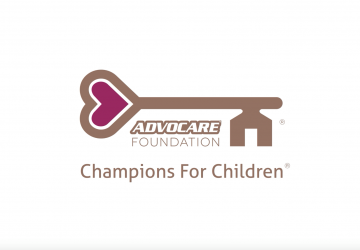We would all probably agree that antioxidants are a common topic to pop up in most discussions surrounding healthy eating, supplementation or health and wellness in general. But, what exactly are the health benefits of antioxidants?
According to the National Center for Complementary and Integrative Health, antioxidants are a group of molecules that are synthetic or natural substances that may prevent or delay some types of cell damage. Cellular damage can occur during a normal process known as oxidation that takes place in the mitochondria of the cell, which are responsible for creating energy molecules that fuel the body.
Oxidation produces compounds known as free radicals that can cause cellular damage when present in high levels. Antioxidants act as the superheroes of the cell and play a role in protecting the cells in our body from damage caused by harmful levels of reactive oxygen species (ROS). Tweet This!
How do antioxidants benefit our health?
Different antioxidants provide benefits to different parts of the body because they are varied and come from a wide range of sources. Tweet This! In general, most antioxidants (also known as phytonutrients) are found in fruits and vegetables. In addition, some vitamins (such as Vitamins C and E), minerals (such as Zinc) and flavonoids (which are found in plants) fall under the category of antioxidants.
Plant foods are one of the best sources of phytonutrients, which unfortunately, are often not included in the typical American diet. Tweet This! According to the Dietary Guidelines for Americans 2015-2020 Eighth Edition, the Standard American Diet is “rich” in red meat, unhealthy fats, refined sugar, and processed foods with minimal intake of fruits, vegetables, fish, legumes, and whole grains. About 75 percent of the American population has an eating pattern that is low in vegetables, fruits, dairy and healthy oils. Tweet This!
What are good sources of antioxidants?
- Fruit and Berries
- Vegetables
- Legumes
- Coffee
- Dark Chocolate
Vitamin C
- Also known as ascorbic acid, Vitamin C, is a water-soluble nutrient found in fruits and vegetables like oranges, strawberries, broccoli and carrots.
- Vitamin C improves the absorption of iron from plant-based foods and helps support immune health. Tweet This!
- The body needs Vitamin C to make collagen, a protein required to help give structure to the body.
Vitamin E
- Vitamin E is a fat-soluble nutrient that helps to support the immune system and plays a role in vasodilation, which decreases blood pressure and blood clotting.
- Nuts like peanuts, hazelnuts and almonds, and green vegetables like spinach and broccoli, are all sources of Vitamin E.
Selenium
- Trace element that occurs naturally in Brazil nuts, seafood and organ meats; it is also found in brown rice, oatmeal and spinach.
- Selenium plays a critical role in reproduction, metabolism, DNA synthesis, and protection from oxidative damage and infection, and is therefore considered a nutritionally essential element.
Zinc
- Zinc is an essential trace element that acts as an antioxidant.
- While essential trace elements are necessary in small amounts for human health, Zinc helps boost the immune system and promotes healthy skin, nails, hair and bones. Tweet This!
- Great dietary sources of Zinc include whole grains, peas, oysters, poultry, red meat, ginger root, beans and nuts.
Beta-Carotene
- Beta-Carotene is an orange or red plant pigment found in plants like squash, spinach, sweet potatoes and carrots.
- It is a source of Vitamin A (retinol) in your diet, serves as an antioxidant and can help protect cells from the damaging effects of ROS.
- Beta-carotene plays a role in the visual cycle, reproduction, maintenance of epithelial functions, growth and development. Even more, it may also help decrease the risk of developing cardiovascular disease.
Lutein + Zeaxanthin
- Lutein and zeaxanthin are phytochemicals located in the eye and have a yellow to red pigment.
- Responsible for filtering harmful high-energy blue wavelengths of light and help protect and maintain healthy cells in the eyes.
- Great sources of lutein and zeaxanthin are dark leafy green vegetables and cruciferous vegetables like spinach, kale, turnips and collard greens.
Lycopene
- Lycopene is a naturally occurring antioxidant that gives fruits and vegetables a red color.
- Tomatoes are a good source of lycopene, but it is also found in watermelons, red oranges, pink grapefruits, apricots, rosehips and guavas.
- Lycopene may help to lower the risk of heart disease and help support prostate health.
Key things to remember.
- Together, different vitamins and phytonutrients work collaboratively and sometimes synergistically, to help support overall health and wellness by neutralizing free radicals in the body.
- Best source of antioxidants is from your diet – specifically from fruits and vegetables. Tweet This!
- Antioxidants help rid the body of free radicals or reactive oxygen species (ROS). Elevated levels of free radicals can damage the cells in the body.
- Most antioxidants are exhausted or used up in the neutralization of ROS, so they have to be replenished.
- Antioxidant supplements may interact with some medicines.
- Although Vitamin K is not an antioxidant, it is found in antioxidant-rich vegetables like kale, spinach, and turnip greens and can alter the effects of blood thinners like warfarin.
- Dietary Guideline for Americans suggests consuming at least 4-5 servings (each) of fruits and vegetables per day.
- If you are pregnant or nursing, it is important to consult your health care provider.
- Tell your health care providers about any complementary health approaches you use. This will help ensure coordinated and safe care.
References
Chun OK, Floegel A, Chung SJ, et al. Estimation of antioxidant intakes from diet and supplements in U.S. adults. Journal of Nutrition. 2010;140(2):317–324.
Klein EA, Thompson IM Jr, Tangen CM, et al. Vitamin E and the risk of prostate cancer: the Selenium and Vitamin E Cancer Prevention Trial (SELECT). JAMA. 2011;306(14):1549–1556.
Christen WG, Glynn RJ, Chew EY, et al. Vitamin E and age-related cataract in a randomized trial of women. Ophthalmology. 2008;115(5):822–829.
health.gov/dietaryguidelines
choosemyplate.gov
cancer.gov
ars.usda.gov
nccih.nih.gov





